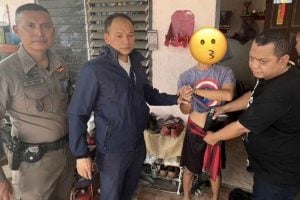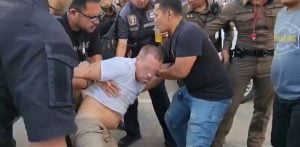Thai traditional dance as an education

Dive headfirst into the thrilling universe of Thai traditional dance; it’s an absolutely mesmerising spectacle that simply oozes grace, elegance, and compelling storytelling. This art form is so much more than a dance. Overflowing with rich history, it’s a vibrant educational tool that breaks down barriers and supercharges your learning experience!
In our modern digital age, Thai traditional dance has secured its spot on multimedia platforms and internet-based learning systems, making it more accessible than ever before. Dive in deeper and get ready to uncover various forms of Thai dance and see how they all contribute to creating a far more engaging learning experience you’ll never forge.
Overview of Thai Traditional Dance

Step right into the enchanting world of Thai Traditional Dance, a delightful slice of Thailand’s overflowing cultural pie. This charming art form doesn’t just dazzle you with its elegant twirls and spins that tell tales from long ago, but it’s also a fun way to learn something new.
Historical significance
Steeped in centuries of tradition, Thai dance finds its roots in Indian mythology and culture, gradually evolving to incorporate distinct Thai characteristics during the reign of Rama II. Formerly an exclusive performance in the royal courts, Thai dance has extended beyond grand palace walls, reaching out to the masses, and serving as a remarkable tool for education. In striking harmony with the progress of the digital age, Thai dance seamlessly embraces multimedia and internet-based learning tools. Thus, transforming its reach and accessibility, it continues to enrich the learning experiences of individuals worldwide.
Cultural context
Thai traditional dance intricately intertwines within the strands of everyday Thai life, encapsulating an ongoing dialogue between the past and present. This is reflected not just in the dance movements and stories they tell but also in how this beautiful art form, the dance, mirrors and translates the day-to-day realities of the Thai people. The multifaceted forms of Thai dance cater to different settings – from sacred rituals to public entertainment, presenting a vivid panorama of Thailand’s diverse cultures. In a modern context, Thai traditional dance is imparting education beyond the classroom, fostering a dynamic learning environment that nurtures an understanding of Thailand’s vibrant culture and history.
Educational aspects of Thai Traditional Dance
The Thai Traditional Dance, a mesmerising element of Thai cultural heritage, extends beyond an enchanting art form. It functions as an effective educational mechanism, blending artistic creativity with comprehensive knowledge of Thai history and customs. This article will explore the manner in which this splendid art has become intertwined with Thai education, from incorporation within the curriculum to the profound learning outcomes it yields.
Integration within curriculum
Thai traditional dance is integrated into educational curriculums not merely as a supplementary activity, but as a rich area of academic study. Tracing its origins back to Thailand’s vibrant historical and cultural tapestry, this practice provides students with deep insights into Thai traditions and their progressive evolution. Furthermore, it bolsters numerous skills, including coordination, rhythmical awareness, discipline, teamwork, and creative thinking, thus promoting well-rounded development. Through diverse learning formats that harmoniously weave together physical movements, musical accompaniment and storytelling elements; students engage with complex concepts in an immersive and experiential way.
Outcomes of learning
Incorporating Thai traditional dance within pedagogical frameworks produces significant results. Firstly, it cultivates in students a deep-seated appreciation for their own culture—nurturing national identity and pride. Additionally, intricate movements required by the choreography contribute to improved physical fitness levels while enhancing spatial orientation capacities and bodily control mechanisms. The detailed design of costumes and props stimulates creativity; while narrative components foster values-based education along with empathy cultivation and emotional intelligence enhancement. Students acquire not only dance techniques but also gain an understanding of historical occurrences, societal norms, mythological tales, & moral lessons encoded within these traditional narratives. Education involving Thai traditional dance shapes well-balanced individuals who are culturally conscious; physically dexterous; creatively inspired, & emotionally mature.
Variants of Thai Dance in education

In Thai traditional dance education, three significant forms take the spotlight in the curriculum: Khon, Lakhon Nai, and Li-Ke. Each of these forms embodies Thailand’s rich cultural tale and plays a crucial role in promoting cultural awareness and fostering emotional maturity amongst learners.
Khon
Recognised by UNESCO as a Heritage Dance, Khon forms an influential segment of Thai traditional dance education. Established over four centuries ago, it originated from Hindu temple practices and rituals. In educational settings, Khon is incorporated to elucidate its historical precedence and portray its allegorical nature. The performances, replete with masked dancers, narrators, and characters representing men, women, demons, and monkeys, transform the learning environment into a miniature royal court, replicating the actual performance circumstances. By studying Khon, learners gain comprehensive insights into the dance’s evolution across the years, thereby fostering a deep appreciation for Thai culture.
Lakhon Nai
Initially performed by royal maidens, Lakhon Nai is another classical form of Thai dance, which gained prominence in the Thai educational system. Several Thai institutions emphasise the art of Lakhon Nai – a dance primarily performed by women in synchronised groups. As part of Thai traditional dance education, learners examine Lakhon Nai’s historical roots and thematic elements. The dance, developed in Ayutthaya and Bangkok courts, uses graceful acts coupled with lively hand movements. Instructing learners in this dance fosters motor skills, rhythm sense, and precision – indispensable components of physical agility.
Li-Ke
Lastly, Li-Ke is another innovative dance form integral to Thai traditional dance education. Although details of Li-Ke in curricula were not found within the given context, it’s notable that this form, like Khon and Lakhon Nai, is significant in enriching the educational landscape. Learners studying Li-Ke would presumably delve into its characteristics, historical context, and cultural implications – in adherence to the guiding principles of Thai traditional dance education.
Inculcating these various dance forms within the Thai educational system reinforces national identity and creates a holistic academic environment that embraces traditional Thai arts. It elevates learners’ overall understanding of Thai culture, engraves it into their minds and bodies, and amplifies their sophistication as culturally aware individuals.
You can also check out,Traditional Thai textiles,Traditional Thai textiles are a testament to Thailand’s rich cultural heritage, weaving together centuries of history, art, and craftsmanship. These textiles are more than just fabric; they’re a vibrant expression of Thai identity, embodying the spirit and skill of the artisans who create them.
Latest Thailand News
Follow The Thaiger on Google News:


























